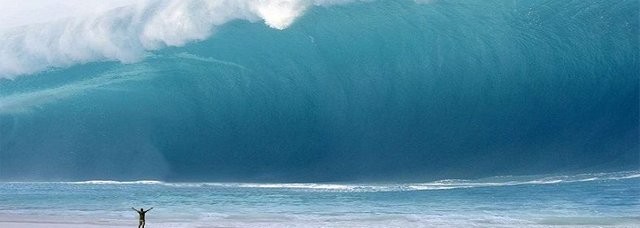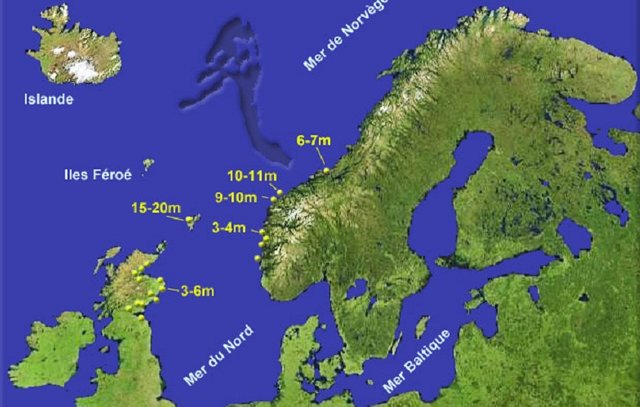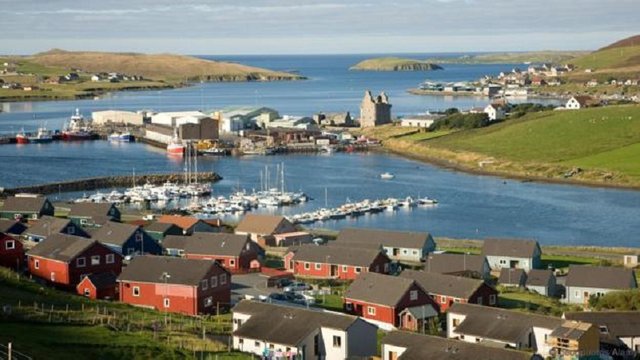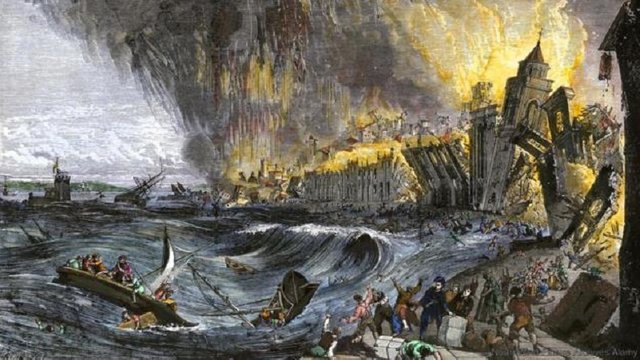Can repeat the largest tsunami in the history of mankind?

About 8,000 years ago, a giant wave rushed on the coast of the Shetland islands and washed away everything in its path. Its height is 25 meters (the size of a 7-storey building), speed reached 35 meters per second. In contrast to the Indian Ocean tsunami in 2004, in those days there were no video cameras that could capture the catastrophe, nor the Internet, to spread the news around the world. Instead, the water receded, leaving behind many traces in the coastal landscape that had been stored unopened eight millennia.
Today, geologists, paleontologists and archaeologists are trying to reconstruct the events of those years and see how likely such a disaster today. The tsunami about 6200 BC, has been linked to climate change and the sudden collapse of the continental shelf in Norway. Three huge landslide took over 290 km of coastline and drove about 3000 cubic kilometers of sediments.
According to Dr. John Hill, from Imperial College London, the impact of the disaster, dubbed Storegga Slide, was felt far beyond the borders of Scotland. The resulting wave is not only flooded the Shetland Islands, and reached Greenland.

Yellow figures: Tsunami height Storegga Slide
Storegga Slide has become one of the biggest disasters of its kind in modern history and caused the largest tsunami ever known to mankind. At the same time the disaster was only a speck in a series of events and rapid changes that marked the end of the last ice age, which lasted from 110 000 to 12 000 years ago.
At the peak of glaciation thick layer of ice covered the modern Canada and the northern United States, a large part of Asia, Russia, Northern Europe and the UK. About 20 000 years ago came warming. Its causes are still debated, but there is ample evidence that the end of the Ice Age resulted in seasonal variation of solar energy, which may be exacerbated by the natural growth of greenhouse gases in the atmosphere.
When the ice began to melt, Britain turned from icy tundra in a forested area with a unique land bridge - a large portion of land called Doggerland that connected modern British Isles with Denmark and the Netherlands. This was an extremely attractive place for the life of the people of the Mesolithic era, abundant lakes, estuaries, forests and salt marshes.

In this place, in the Shetland Islands, the tsunami reached a height of 12 meters
Melting ice also had other consequences. In North America, he has created a huge lake the size of the Black Sea, which is retained by glaciers around him. About 8200 years ago, the last ice melted, resulting in the lake "burst", causing extensive flooding in the North Atlantic. Over the next 100 years, sea levels on the planet rose by 2-4 meters. This factor, combined with a tsunami, caused landslides Storegga Slide, led to flooding Doggerland, once and for separating Britain from the 'mainland'.
So there is a huge wave, like the one that washed over the Shetland Islands 8,000 years ago, and again in our day?
Dr. Sue Dawson of the University of Dundee is one of the principal investigators Storegga Slide. In her opinion, the tsunami in Europe - a more frequent event than previously thought.
Storegga Slide was the chief of them, but there is evidence that in 1755 a large wave which destroyed Lisbon, gushing in the south-west of England, and in 5000 and 1500 years BC two localized tsunami hit the Shetland Islands. In addition, there are many historical documents that mention the waves, which could be a tsunami, but did not leave any prints in the landscape.

The tsunami in Lisbon in 1755
During periods of intense climate events such as Storegga Slide, are the most likely. According to Dr. Jennifer Stanford of the National Oceanography Centre of Southampton for the past 45 000 years, about 70% of all landslides in Norway took place in the period of intensive melting of glaciers, that is 16 000 to 4000 years ago. The most likely cause of the landslide becomes overloaded continental shelf with an increase in the volume of water from the melting ice, although its role may be played and the earthquake, as well as access to the surface of methane.
"The warming of the ocean can lead to the decomposition of gas hydrates in the ice, which contain methane, and that, in turn, leads to the destabilization of sediments and increased seismicity. The combination of all these factors cause subsea landslides, which may be "tsunamigenic". Already in Greenland observed increase in the number of small tsunamis associated with the collapse of the icebergs. Therefore, our task - to determine the frequency and timing of landslides, which can cause a big wave, "- says Stanford.
"If today, an event that resembles Storegga Slide, set off a wave of Spitzbergen and Greenland in the direction of the UK, its impact is truly catastrophic," - says the researcher. "We can see a tsunami up to 10 meters high, which completely flood the cities such as Edinburgh and Newcastle. At the moment, the chances of such a large-scale disaster is quite small, but smaller tsunami is quite likely. "
Source: Journal of Incidents
Does that part of the world currently have a lot of glaciers and are they rapidly melting? I know in other areas of the world we are seeing a lot of melting.